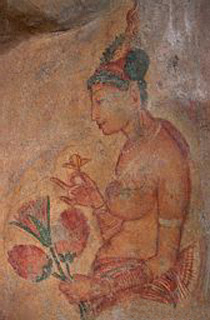Sri Lanka is the world famous bird living place which had recorded 427
species, 250 species are resident and 26 species are endemic to the island.
Most of endemic birds are living in the wet zone at sinharaja forest which is
published as world heritage. List of the endemic birds is given bellow.
|
|
English Name
|
Scientific Name
|
SinhalaName
|
|
1
|
Ceylon
Junglefowl
|
Gallus
lafayettii (Phasianidae)
|
Wali
Kukula
|
|
2
|
Ceylon Spurfowl
|
Galloperdix
bicalcarata (Phasianidae)
|
Lanka Haban Kukula
|
|
3
|
Layard's
Parakeet
|
Psittacula
calthorpae (Psittacidae)
|
-
|
|
4
|
Green-billed Coucal
|
Centropus
chlororhynchos (Cuculidae)
|
-
|
|
5
|
Sri
Lanka Woodpigeon
|
Columba
torringtoni (Columbidae)
|
Mailagoya
|
|
6
|
Sri Lankan Hanging
Parrot
|
Loriculus beryllinus
(Psittacidae)
|
Lanka Giramalitta
|
|
7
|
Chestnut-backed
Owlet
|
Glaucidium
castanonotum (Strigidae)
|
-
|
|
8
|
Red-faced Malkoha
|
Phaenicophaeus
pyrrhocephalus (Cuculidae)
|
Wataratu Malkoha
|
|
9
|
Sri
Lankan Gray Hornbill
|
Ocyceros
gingalensis (Bucerotidae)
|
Kendetta
|
|
10
|
Sri Lankan Bush
Warbler
|
Elaphrornis palliseri
(Sylviidae)
|
-
|
|
11
|
Yellow-eared
Bulbul
|
Pycnonotus
penicillatus (Pycnonotidae)
|
Oluwa
Rathu Kottoruwa
|
|
12
|
Sri Lanka Blue Magpie
|
Urocissa ornata
(Corvidae)
|
-
|
|
13
|
Ashy-headed
Laughing-thrush
|
Garrulax
cinereifrons (Timaliidae)
|
-
|
|
14
|
Orange-billed Babbler
|
Turdoides rufescens
(Timaliidae)
|
Ratu Demalichcha
|
|
15
|
Sri
Lanka White-eye
|
Zosterops
ceylonensis (Zosteropidae)
|
Lanka
Sithasiya
|
|
16
|
Sri Lanka Whistling
Thrush
|
Myophonus blighi
(Turdidae)
|
-
|
|
17
|
Sri
Lanka Myna
|
Gracula
ptilogenys (Sturnidae)
|
Lanka
Salalihiniya
|
|
18
|
White-faced Starling
|
Sturnus albofrenatus
(Sturnidae)
|
-
|
|
19
|
Spot-winged
Thrush
|
Zoothera
spiloptera (Turdidae)
|
Lanka
Thithpiya Thirasikaya
|
|
20
|
Dull Verditer
Flycatcher
|
Eumyias sordidus
(Muscicapidae)
|
-
|
|
21
|
Legge's
Flower pecker
|
Dicaeum
vincens (Dicaeidae)
|
-
|
|
22
|
The Black-capped
Bulbul
|
Pycnontus melanicterus
|
Hisakalu Kondaya
|











+of+IMG1058A.jpg)





